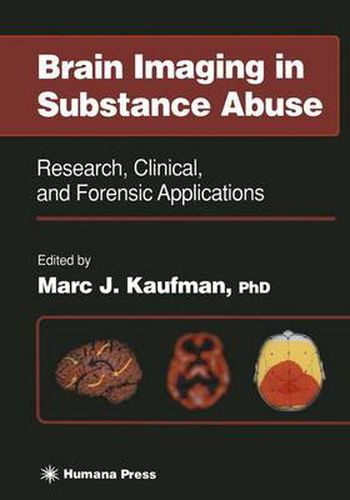Readings Newsletter
Become a Readings Member to make your shopping experience even easier.
Sign in or sign up for free!
You’re not far away from qualifying for FREE standard shipping within Australia
You’ve qualified for FREE standard shipping within Australia
The cart is loading…






Highly experienced clinical researchers from diverse fields describe in detail the use of electroencephalography, emission tomography, magnetic resonance imaging, and neuropsychology to study the neural effects of substance abuse. They extensively review research findings these powerful methods have yielded. The authors detail the effects of drugs, including alcohol, benzodiazepines, marijuana, opiates, cocaine, amphetamines, hallucinogens, and solvents on brain electrical activity, metabolism, hemodynamics, receptor and neurotransmitter levels, neurochemistry, and structure. The striking findings they report emerge from more than 1350 articles in some 320 journals, and are organized by method, abused substance, and drug use state. Comprehensive and readily accessible, Brain Imaging in Substance Abuse: Research, Clinical, and Forensic Applications offers psychiatrists, radiologists, neurologists, pharmacologists, physiologists, substance abuse specialists, and legal professionals a broad yet thoroughly integrated understanding of the methods and results obtained with clinical neuroimaging studies of substance abuse today.
$9.00 standard shipping within Australia
FREE standard shipping within Australia for orders over $100.00
Express & International shipping calculated at checkout
Highly experienced clinical researchers from diverse fields describe in detail the use of electroencephalography, emission tomography, magnetic resonance imaging, and neuropsychology to study the neural effects of substance abuse. They extensively review research findings these powerful methods have yielded. The authors detail the effects of drugs, including alcohol, benzodiazepines, marijuana, opiates, cocaine, amphetamines, hallucinogens, and solvents on brain electrical activity, metabolism, hemodynamics, receptor and neurotransmitter levels, neurochemistry, and structure. The striking findings they report emerge from more than 1350 articles in some 320 journals, and are organized by method, abused substance, and drug use state. Comprehensive and readily accessible, Brain Imaging in Substance Abuse: Research, Clinical, and Forensic Applications offers psychiatrists, radiologists, neurologists, pharmacologists, physiologists, substance abuse specialists, and legal professionals a broad yet thoroughly integrated understanding of the methods and results obtained with clinical neuroimaging studies of substance abuse today.